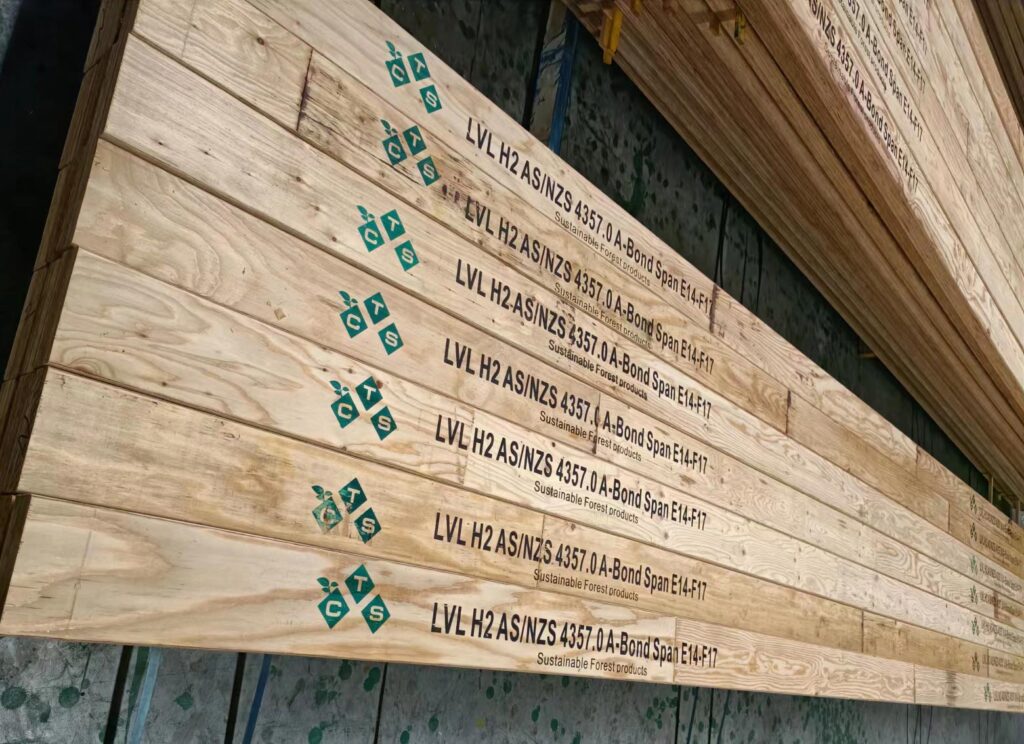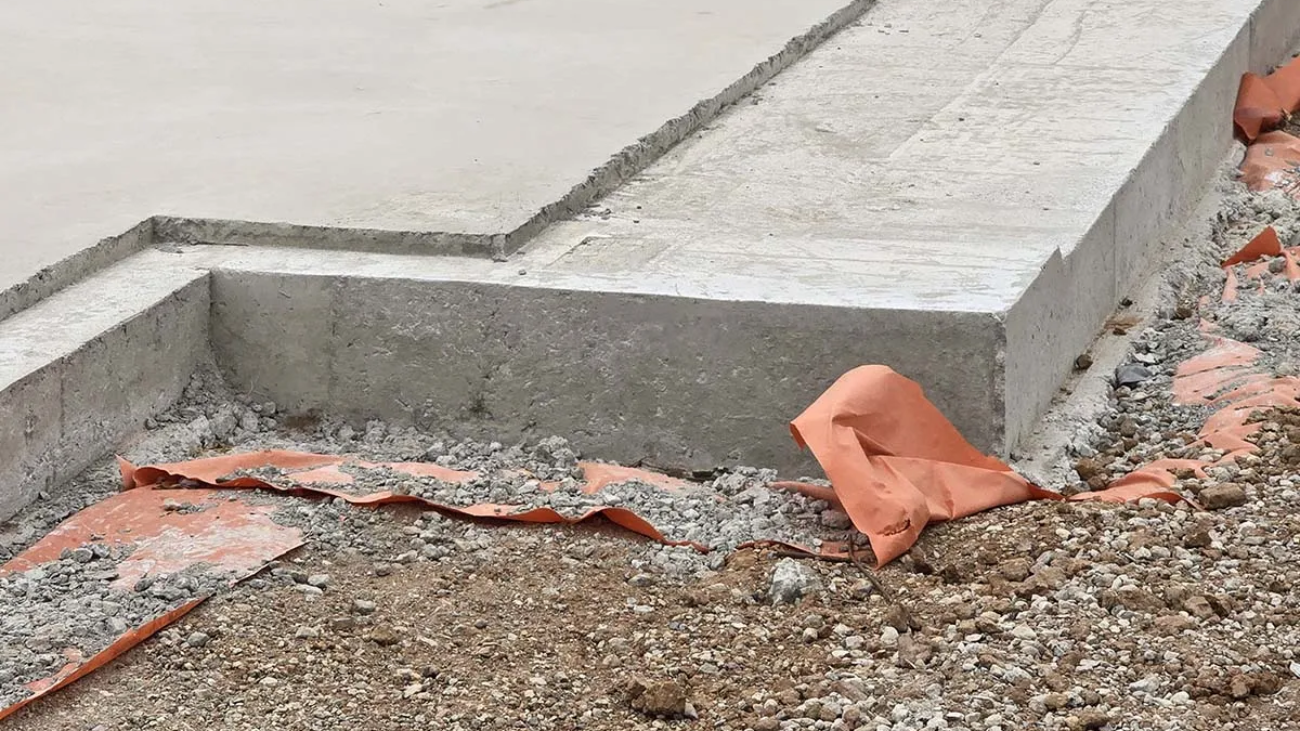What is LVL Timber and Why is it Important for Formwork in Australia?
LVL (Laminated Veneer Lumber) timber is an engineered wood product that’s changing the way construction is done in Australia. It consists of several layers of thin wood veneers glued together under high heat and pressure, making it incredibly strong.
In formwork applications, LVL timber is used as a key component in concrete casting systems. Here’s why it’s so important:
- Supporting wet concrete loads: During the pouring process, LVL timber provides the necessary support for the weight of the wet concrete.
- Maintaining dimensional stability: LVL timber is designed to resist warping or bending, ensuring that the formwork stays in its intended shape.
- Creating smooth surfaces: The use of LVL timber results in clean and even concrete finishes, eliminating the need for extensive post-construction finishing work.
- Providing structural integrity: With its superior strength, LVL timber ensures that the formwork can withstand the forces exerted by the concrete without collapsing.
The Australian construction industry has specific requirements when it comes to formwork materials. They need products that consistently perform well and meet strict safety standards. This is where LVL timber shines: When it comes to the buy LVL timber formwork Australia having verstile choices.

1. Superior Strength Properties
Compared to traditional timber, LVL timber offers significantly higher strength properties:
- Up to 2.5 times stronger than regular timber
- Enhanced load-bearing capacity
- Reduced deflection under pressure
2. Quality Assurance Benefits
LVL timber is manufactured with precision, resulting in consistent quality:
- Produced according to exact specifications
- Uniform material properties throughout
- Predictable performance characteristics
The use of high-quality LVL timber in formwork directly impacts project outcomes. Construction teams rely on its dimensional stability and strength to achieve:
- Accurate placement of concrete
- Minimized wastage of materials
- Increased efficiency in construction processes
- Improved safety measures at the workplace
For builders and contractors in Australia, choosing the right type of LVL timber is crucial. It can greatly affect project success, compliance with safety regulations, and overall quality of construction.
Read more at: Timber LVL Formwork Prices: What Affects the Cost
How Does LVL Timber Compare to Traditional Materials in Formwork Applications?
LVL timber stands out from traditional formwork materials through its exceptional structural properties and cost-effectiveness. Here’s a detailed comparison of LVL timber against conventional formwork materials:
Strength Characteristics
- LVL timber delivers 2.5 times the strength of standard timber
- Load-bearing capacity exceeds traditional solid wood by 40%
- Maintains structural integrity under high-pressure concrete pours
- Resists warping and twisting common in conventional timber
Durability Benefits
- Engineered construction prevents splitting and cracking
- Uniform density throughout the material
- Resistant to moisture-related deterioration
- Maintains shape stability across multiple uses
Cost-Efficiency
- Higher initial investment offset by extended lifespan
- Reduced material waste during installation
- Lower labour costs due to easier handling
- Fewer replacements needed compared to traditional timber
Performance Advantages
- Creates smoother concrete finishes
- Allows for precise dimensional control
- Supports higher pour rates
- Reduces form deflection under pressure

Environmental Impact
- Made from sustainable forestry practices
- Uses less raw material than solid timber
- Reduced waste through longer service life
- Lower carbon footprint in transportation due to lighter weight
Practical Applications
- Ideal for high-rise construction projects
- Perfect for complex architectural designs
- Suitable for both vertical and horizontal formwork
- Excels in challenging weather conditions
LVL timber’s engineered nature addresses many limitations found in traditional formwork materials. Its consistent quality and predictable performance make it particularly valuable for Australian construction projects where precision and reliability are essential.
The material’s ability to maintain dimensional stability under varying environmental conditions proves particularly beneficial in Australia’s diverse climate zones. You’ll find LVL timber performing exceptionally well from the tropical north to the temperate south, maintaining its structural integrity regardless of location. Learn more about climate on https://salatainstitute.harvard.edu/bringing-climate-change-into-medical-school/
What Are the Key Considerations When Sourcing Quality LVL Timber in Australia?
Sourcing quality LVL timber requires careful attention to specific Australian standards and supplier credentials. The AS/NZS 4357 certification serves as your primary quality indicator when selecting LVL products for formwork applications.
Essential Quality Markers:
- Manufacturing compliance with AS/NZS 4357
- Third-party certification documentation
- Clear grade stamps and product identification
- Moisture content specifications
- Treatment certificates for termite resistance
Trusted Australian Suppliers
The Australian market features several reputable LVL timber suppliers who maintain strict quality control:
- Fushiwood Group – Specialises in engineered wood products with nationwide distribution
- Blacktown Building Supplies – Offers extensive LVL inventory with custom sizing options
- Tilling Timber – Provides comprehensive technical support and certification
- ITI Australia – Known for reliable supply chain and quality assurance
Supply Chain Considerations
Your supplier should demonstrate:
- Consistent stock availability
- Clear documentation of product specifications
- Technical support services
- Delivery capabilities to your construction site
- Quality control measures throughout storage and transport
Price vs Quality Balance
Quality LVL timber might command higher prices, but consider these factors:
- Long-term durability reduces replacement costs
- Better performance in high-stress applications
- Lower risk of structural failures
- Improved workplace safety outcomes
- Reduced material waste
Local vs Import Sources
Australian-made LVL products often provide:
- Faster delivery times
- Better alignment with local building codes
- Easier access to technical support
- More reliable warranty claims
- Simplified compliance documentation
When selecting your supplier, request sample certificates and product specifications. Verify their compliance history and ask about their quality control processes. Direct communication with their technical team helps ensure you receive materials that meet your project’s specific requirements.
Are There Different Sizes and Treatments Available for LVL Timber Used in Formwork?
LVL timber for formwork applications comes in a diverse range of sizes to accommodate different structural requirements. The standard dimensions include:
Common LVL Timber Sizes:
- 35mm x 145mm
- 45mm x 195mm
- 63mm x 240mm
- 75mm x 300mm
- 90mm x 400mm
These sizes allow builders to select the most appropriate dimensions based on specific load-bearing requirements and project specifications. Custom sizes can be ordered through specialised suppliers to meet unique project needs.
Treatment Options
H2 and H3 treatments enhance LVL timber’s resistance to termites and decay:
- H2 Treatment: Suitable for indoor applications
- Protects against borers and termites
- Applied through pressure treatment
- Ideal for enclosed, protected environments
- H3 Treatment: Designed for outdoor exposure
- Offers protection against weather elements
- Guards against fungal decay
- Recommended for exposed formwork applications
The treatment process involves pressure-impregnating the timber with preservative chemicals that penetrate deep into the wood structure. This creates a long-lasting barrier against pest infestation and decay. Click here to find more about decay.
Specialised Coatings
Additional protective measures include:
- Water-repellent sealants
- UV-resistant finishes
- Anti-fungal treatments
- Fire-retardant coatings
These treatments extend the lifespan of LVL timber formwork while maintaining its structural integrity. The choice of treatment depends on:
- Project location
- Environmental conditions
- Expected duration of use
- Budget constraints
- Specific building regulations
Australian standards require treated LVL timber to meet strict quality control measures, ensuring consistent performance across different applications. Each piece carries identification marks indicating its treatment level and compliance with relevant standards.
How is High-Quality LVL Timber Manufactured and What Quality Control Measures Are Implemented?
The manufacturing process of LVL timber involves precise steps and rigorous quality control to ensure superior strength and durability for formwork applications.
Raw Material Selection
- Premium-grade hardwood logs undergo strict quality checks
- Logs must meet specific diameter, length, and defect-free requirements
- Australian standards compliance verification at every stage
Manufacturing Steps
1. Log Preparation
- Debarking of logs using specialised equipment
- Initial moisture content testing
- Cross-cutting to required lengths
2. Veneer Production
- Rotary peeling of logs into thin veneers
- Automated thickness monitoring
- Immediate defect detection and removal
3. Drying Process
- Computer-controlled drying chambers
- Moisture content reduction to 8-12%
- Temperature and humidity monitoring
4. Adhesive Application
- Phenol formaldehyde resin coating
- Uniform adhesive distribution
- Thickness control systems
5. Pressing and Bonding
- Hot pressing at specific temperatures
- Pressure application for optimal bonding
- Automated press cycle monitoring
Quality Control Measures
Laboratory Testing
- Bend strength verification
- Shear strength assessment
- Delamination resistance checks
Production Line Controls
- Real-time density monitoring
- Continuous moisture content tracking
- Automated visual inspection systems
The manufacturing facility maintains strict environmental controls throughout the process. Each batch undergoes testing to verify compliance with AS/NZS 4357 standards. Modern facilities employ automated scanning technology to detect internal defects and ensure consistent quality across production runs.
Australian manufacturers implement comprehensive tracking systems, allowing full traceability from raw material to finished product. This ensures every piece of LVL timber meets the demanding requirements of formwork applications.
Which Industries Use LVL Timber for High-load Bearing Formwork?
LVL timber’s exceptional strength-to-weight ratio makes it a preferred choice across multiple construction sectors requiring robust formwork solutions. The building and construction industry relies heavily on LVL timber formwork, particularly in:
1. High-Rise Construction
- Commercial office towers
- Residential apartment complexes
- Mixed-use developments
- Hotel construction projects
2. Industrial Applications
- Manufacturing facilities
- Distribution centres
- Cold storage warehouses
- Processing plants
3. Infrastructure Projects
- Bridge construction
- Underground parking structures
- Transport terminals
- Water treatment facilities
The versatility of LVL timber shines in projects demanding precise concrete placement and superior load-bearing capacity. In high-rise construction, LVL formwork supports massive concrete loads while maintaining dimensional stability across multiple floor levels. Industrial warehouse projects benefit from LVL’s ability to create large, uninterrupted spans essential for wide-open spaces.
The material’s adaptability extends to specialised construction applications:
- Curved architectural features
- Complex geometric designs
- Multi-level parking structures
- Heavy-duty foundation work
Australian builders particularly value LVL timber in challenging environmental conditions, where its resistance to warping and splitting ensures reliable performance in both coastal and inland construction sites.
Where Can You Buy Quality LVL Timber for Formwork Projects in Australia?
Quality LVL timber for formwork projects is readily available through multiple channels across Australia. Here’s where you can source your materials:
1. Major Building Supply Companies
- Bunnings Warehouse – Multiple locations nationwide
- ITI Australia – Specialising in engineered wood products
- Blacktown Building Supplies – Sydney metro area
- Carter Holt Harvey – National distribution network
2. Specialist Timber Suppliers
- Austim – Perth-based with national delivery
- Tilling Timber – Melbourne headquarters, Australia-wide service
- Meyer Timber – Multiple branches across major cities
3. Online Marketplaces
- BuildMate – Digital platform for construction materials
- TradeSquare – B2B marketplace with verified suppliers
- Industry Connect – Bulk ordering platform
Many suppliers offer both click-and-collect and delivery services. You can request detailed product specifications, certifications, and technical support through these channels.
Buying Tips
- Request compliance certificates for Australian standards
- Compare prices across multiple suppliers
- Check stock availability before placing large orders
- Verify warranty terms and delivery timeframes
- Ask about bulk purchase discounts
- Inspect the timber quality in person when possible
Contact suppliers directly for current pricing and availability, as stock levels can fluctuate based on market demand.

